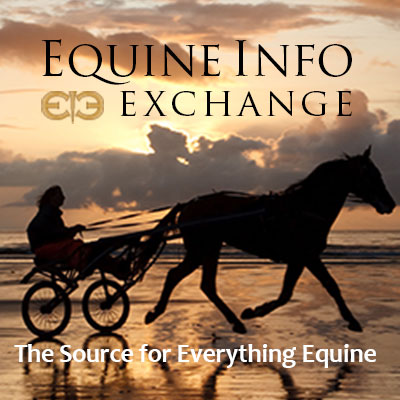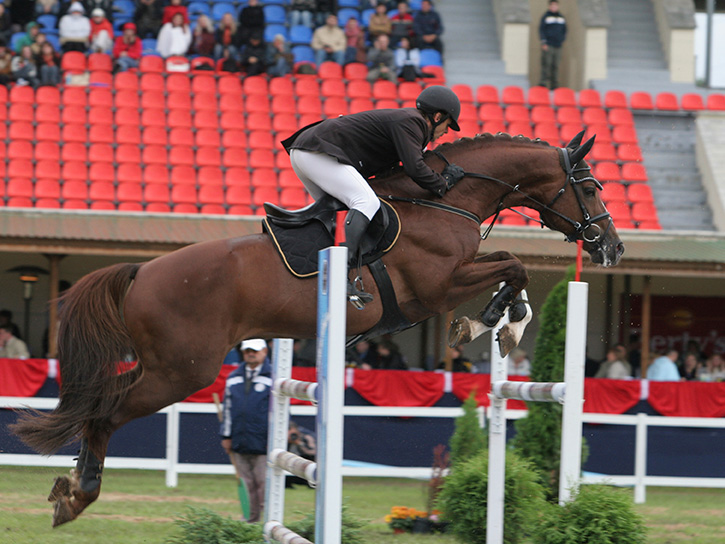
Hunter/Jumper is an equestrian sport that combines the disciplines of hunter and show jumping. Hunter classes test the horse's manners, way of going, and jumping style, while jumper classes test the horse's jumping ability and speed.
Hunter classes are typically judged on a horse's way of going, jumping style, and overall appearance. The horse should be moving smoothly and efficiently, with good manners and a willingness to jump. The jumps in hunter classes are typically lower and more natural-looking than those in jumper classes.
Jumper classes are judged on a horse's jumping ability, speed, and accuracy. The horse should clear the jumps cleanly and quickly, with good form. The jumps in jumper classes are typically higher and more challenging than those in hunter classes.
Hunter/Jumper is a challenging and rewarding sport that requires both horse and rider to be in peak condition. It is a popular sport at all levels, from local shows to international competitions.
Here are some of the key differences between hunter and jumper classes:
-
Hunter classes:
- Judged on horse's way of going, jumping style, and overall appearance.
- Jumps are typically lower and more natural-looking.
-
Jumper classes:
- Judged on horse's jumping ability, speed, and accuracy.
- Jumps are typically higher and more challenging.
Here are some of the benefits of participating in Hunter/Jumper:
- It is a great way to build a strong bond with your horse.
- It is a challenging and rewarding sport that can help you improve your riding skills.
- It is a great way to meet other horse enthusiasts.
- It is a fun and exciting sport to watch.
If you are interested in learning more about Hunter/Jumper, we recommend visiting the website of the United States Hunter Jumper Association (USHJA). The USHJA is the national governing body for Hunter/Jumper in the United States, and they offer a wealth of information on the sport, including rules, regulations, and resources for riders of all levels.
Hunter Jumper - General Information
Hunter Jumper - Foundation
Hunter Jumper - Futurities
-
Young Jumper Championships Futurity
Designed to identify the most promising five and six-year-old show jumping prospects competing in the United States. Developed in cooperation with the International Jumper Futurity.
Hunter Jumper - National Associations
Hunter Jumper - Shows - International
- CHIO Rotterdam A large show jumping and dressage event held in the Netherlands.
-
Jokers Hill Horse Shows
Offering a yearly hunter/jumper schooling and trillium show circuit. Schedule, programs, results, and contacts. CANADA
-
London International Horse Show
Annual championship international show jumping. Held in December. Contact details, newsletter.
-
Longines Masters
Classic Hunter and Jumper show held in Alberta, Canada. Includes history, horse program, and tournament information.
-
Spruce Meadows
Classic Hunter and Jumper show held in Alberta, Canada. Includes history, horse program, and tournament information.
- The Royal Agricultural Winter Fair Held each November in Toronto. The horse show is one of many events including carriage races, performing dogs and agricultural displays. Site gives information about current fair along with results from past fairs.
Hunter Jumper - Shows - United States
- HITS Horse Shows in the Sun Event management company sponsors hunter/jumper horse shows in California, Florida, Arizona, New York, Virginia, and Nevada. Offers six weeks of continuous events throughout the summer. Useful links to related sites. Learn about the company, the shows, job opportunities and merchandise.
- Kentucky Horse Shows LLC
- Longines Masters
- National Western Horse Show Information about the horse show, rodeo and stock show in Denver, Colorado.
- The Devon Horse Show and Country Fair Originated in 1896. The oldest outdoor multi-breed horse show in the United States. Internationally recognized, AHSA A-rated. Held annually in May at Devon, Pennsylvania. Hunters, Jumpers, Saddle Seat, equitation, and carriages. History of show, schedule of events, qualifiers, ticket information, stable information, past results and sponsorship.
-
The Pennsylvania National Horse Show
A multi-discipline equestrian show in Harrisburg. Offering information on tickets, schedule, classes, prize list, entry forms, judges, and local accommodations.
- The South Jersey Horse Listing of horse shows, events, and competitions in the south New Jersey area.
- The Upperville Colt and Horse Show The oldest horse show in the nation dating back to 1853, held in Upperville, Fauquier County, VA. Internationally known, AHSA rated. Hunters, Jumpers, breeding, sidesaddle, and ponies. Extensive information on show, rules, classes, prize monies, local accommodations, results, and links.
- Vermont Summer Festival Horse Shows Manchester, VT horse shows include hunter and jumper series equestrian competition in Vermont's Green Mountains including the Manchester Classic show jumping and equitation.
- Washington International Horse Show Annual show held in October in Washington DC. International riders competing in Jumper classes, hunter classics, dressage, sidesaddle, and ponies. Complete schedule of events and timetable, ticket information, sponsors, prizes and monies, and special events.
Hunter Jumper Associations - International
- British Showjumping Offers membership information, news, show schedules, and rankings.
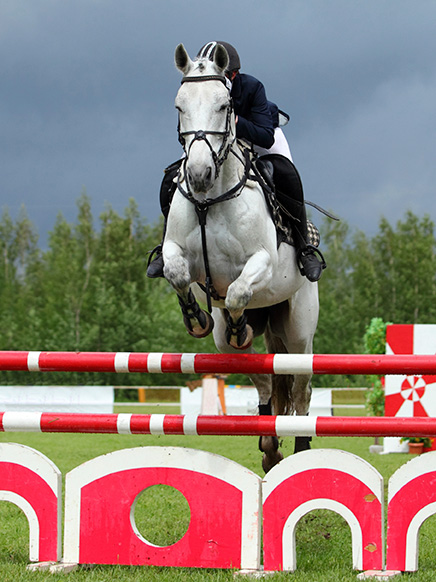
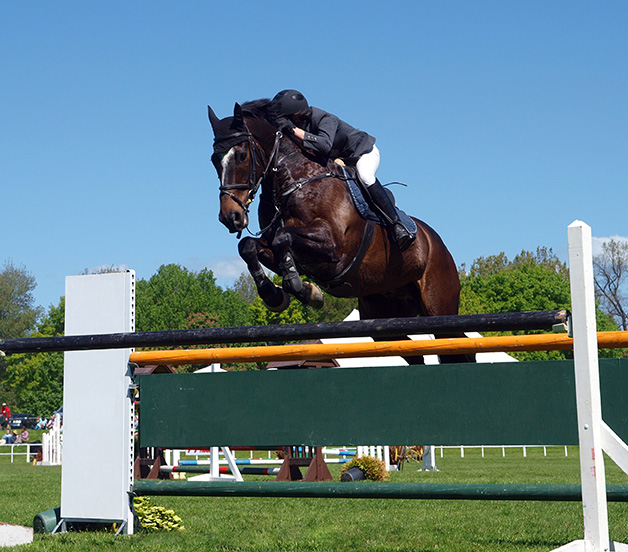
Risk and Reward in the Saddle: What Riding Teaches Us About Chance and Play
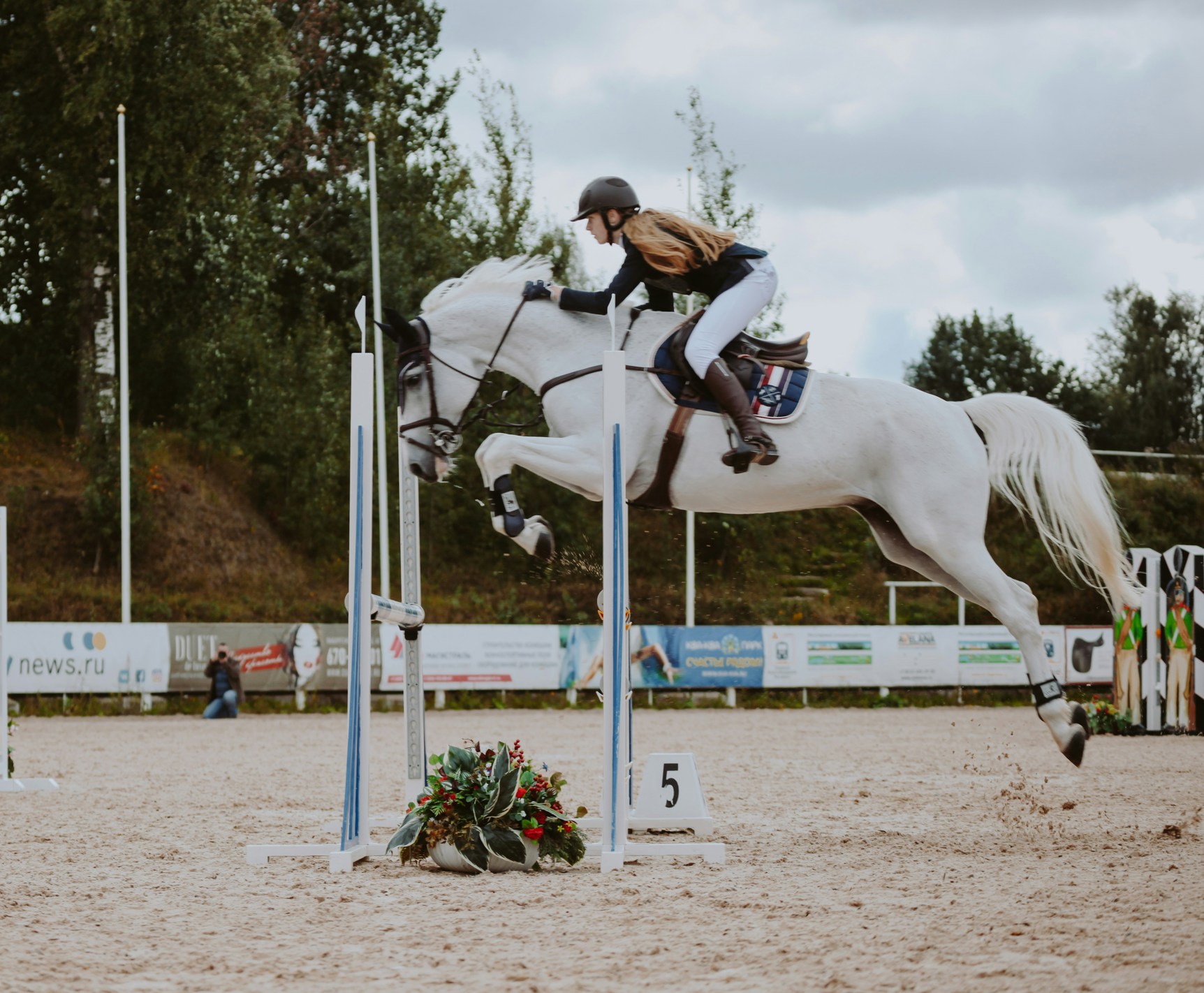
Horseback riding is one of the few pursuits where skill and unpredictability constantly intertwine, like a dance. No matter how experienced a rider may be, each time they step into the stirrups, they are entering into a dialogue with another living being. one with its own moods, instincts and energy. This blend of preparation and uncertainty is precisely what makes equestrian life so compelling. Riders don’t just crave control... they crave the challenge of facing risk, adapting and ultimately finding reward in the journey itself.
It is this very dynamic (risk balanced with reward) that has always drawn humans to more than just the saddle. Games of chance, contests at fairs and leisure activities mirror the same pattern: we enjoy uncertainty, not in spite of it, but because it forces us to adapt, focus and sometimes, simply let go. Let's break down why that mindset is significant.
The Equestrian Spirit and Calculated Risk
Every rider knows the quiet moment before a horse takes a jump: the reins are gathered, the rhythm steadies and for a few seconds, control hangs in the balance. The horse could clear the obstacle beautifully, hesitate, or refuse altogether. Riders train to minimize unpredictability, but they never eliminate it. The risk is part of the reward.
In many ways, this relationship mirrors other areas of life where people test their ability to face uncertainty. Just as a horse demands trust and patience, so too do activities that challenge chance. Riders, perhaps more than most, understand that thrill isn’t about guaranteed success. They understand it’s about navigating variables with composure and courage.
Horses and Games: A Longstanding Connection
Horses have always been tied to human culture not only as partners in labor and travel, but also as central figures in entertainment and games. From ancient chariot races to Renaissance fairs, equestrian events often mingled with contests of luck and spectacle.
Fairs in Europe, for example, frequently combined horse shows with archery contests, dice games and carnival-like amusements. These gatherings weren’t just about demonstrating skill but about indulging in the unpredictability of play. The horse, as a symbol of speed and vitality, often became the centerpiece around which chance and competition thrived.
Even today, modern horse shows retain some of this festive spirit. Beyond the competitions in the ring, there’s often a culture of camaraderie, food, music and small diversions. Honest proof that riders and spectators are both drawn to the same balance of risk and reward that horses so beautifully embody.
Modern Leisure Beyond the Stable
Of course, riders today live in a world that stretches far beyond the stable or the showground. After long training sessions or weekends on the road for competitions, relaxation takes many forms. Some prefer quiet evenings, others social gatherings and many turn to digital entertainment for lighthearted distraction.
It is in these spaces of casual leisure that parallels to equestrian life emerge again. Just as riders savor unpredictability on horseback, they may enjoy games that echo the same thrill in smaller, more controlled doses. For example, some turn to low-stakes online amusements like free slots with bonus and free spins, where the fun lies not in certainty but in the simple act of playing with chance. The stakes are minimal, but the pattern (anticipation, suspense and outcome) remains universally familiar.
What Riders Teach Us About Play
Equestrians bring a unique perspective to the idea of games and risk. They understand better than most that success often depends not on eliminating uncertainty, but on learning to manage it. Patience, resilience and adaptability are as valuable in the saddle as they are in any activity of chance.
A rider guiding a horse through a dressage test demonstrates control and finesse, but also the ability to adapt when the horse reacts unexpectedly. Similarly, when people play games of chance, the challenge is not in predicting every outcome but in embracing unpredictability without frustration. Riders embody this lesson every day: balance preparation with acceptance, skill with humility.
The Universal Allure of Chance
Whether on horseback or at a game table, humans have always sought spaces where skill meets uncertainty. The appeal lies not in guaranteed outcomes but in the thrill of possibility. A clean jump in the arena feels like victory not because it was assured but because the rider took the risk and found success.
The same applies to games: the joy is in the suspense, in the moment before the outcome reveals itself. The universality of this attraction explains why horses and chance-based amusements remain timeless. They speak to something fundamental about human nature: our desire to test limits, flirt with uncertainty and savor the thrill of outcomes we cannot fully control.
Riding, Risk and the Human Spirit
At its core, the equestrian lifestyle reflects the balance between risk and reward that defines so much of human existence. Riders step into the saddle not to control every outcome but to experience the joy of navigating the unknown with skill, patience and courage.
When viewed this way, it’s no surprise that equestrians also appreciate forms of play that echo the same dynamic. Whether in the arena, at the fair, or through casual diversions beyond the stable, the lesson is clear: joy is not about certainty, but about embracing uncertainty with confidence.
In both the world of horses and the world of games, the human spirit thrives on chance. It’s not about winning every time. Not in the slightest. It’s about daring to ride, daring to play and finding meaning in the sheer unpredictability of the journey. This... is the essence of life.
There are more interesting articles in our section on Riding Disciplines.
Descending Gymnastics: Why Ending Smaller Can Be Smarter
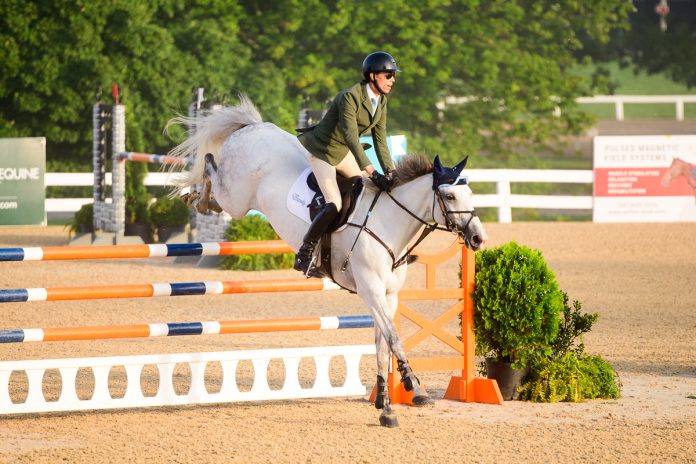
Brought to you by With Purpose: The Balmoral Standard
When most riders picture a gymnastic line, they think of building height as they go. Start small, get the horse organized, and finish with the biggest effort. At Balmoral, however, Carleton and Traci Brooks often flip this expectation. Instead of finishing on a high oxer, they sometimes end with the smallest jump in the line. Why? Because not every horse benefits from ending on a higher jump.
Rethinking the Traditional Gymnastic
Traditional gymnastics are designed to build confidence, strength, and technique. A classic line might begin with a crossrail, then an oxer, then a vertical that gradually gets taller. By the end, the horse is meant to feel successful at a greater height and effort.
But what about the horse that builds too much? The hot one who gets quick through the line, or the green horse who begins to worry? For these horses, finishing big can create anxiety instead of confidence. That’s where descending gymnastics, ending with the lowest fence, come in.
Who Benefits Most
Descending gymnastics are particularly useful for:
- Hot Horses: The kind that rush down lines, throwing their rider onto the defensive.
- Young Horses: Those still learning the ropes, who need to end on a calm, positive note.
- Tense Horses: The ones who start anticipating, bouncing through the line with more adrenaline than rhythm.
- By finishing with a small fence, these horses settle down, take a breath, and learn that not every line ends with maximum effort.
Building the Line
A typical descending gymnastic might start with a crossrail, build to a small vertical or oxer in the middle, and then drop back down to a crossrail at the end. The line still serves its purpose, teaching straightness, encouraging bascule, and keeping the rider focused, but the finish is soft.
This kind of exercise tells the horse: you don’t need to escalate every time. It conditions them to stay rideable and quiet, rather than anticipating a big finish.
What Riders Learn
Descending gymnastics aren’t just for the horse’s benefit. They also teach riders valuable lessons:
- Resist the Urge to Chase: Riders often push harder as jumps get bigger. Ending small reinforces patience.
- Ride the Rhythm, Not the Height: With the last fence tiny, the focus shifts to pace and track instead of “surviving” the finish.
- Learn to Relax, Too: Just as the horse takes a breath at the end, the rider practices letting go of tension.
Avoiding the Trap of Bigger = Better
It’s easy to assume progress means raising fences higher and higher. But Balmoral’s philosophy reminds us that not all horses, or riders, thrive under that model. Sometimes, progress looks like stepping down, using thoughtful exercises to teach relaxation instead of escalation.
In the Show Ring
A horse that’s trained with descending gymnastics often shows a noticeable difference in the ring. Instead of charging the last element of a combination, they stay soft through the finish. Instead of expecting every question to get harder, they stay open to listening. That difference can be the margin between a rushed, tense round and a polished, winning trip.
Not every gymnastic needs to build to a grand finale. By finishing small, riders can teach their horses to stay calm, confident, and consistent. And in the long run, that foundation of rideability will carry far more value than one big jump at the end of a line.
Want to take your riding and horsemanship to the next level? With Purpose: The Balmoral Standard distills decades of wisdom from Carleton and Traci Brooks into practical, thoughtful lessons you can apply every day at home, in the schooling ring, and in the show ring. From training philosophies to mental game strategies, the book offers riders of every level a blueprint for success built on empathy, structure, and purpose.
With Purpose: The Balmoral Standard is available on Kindle and Audible.
This article originally appeared in The Plaid Horse Magazine and is published here with permission.
There are more informative articles in our section on Health & Education.








